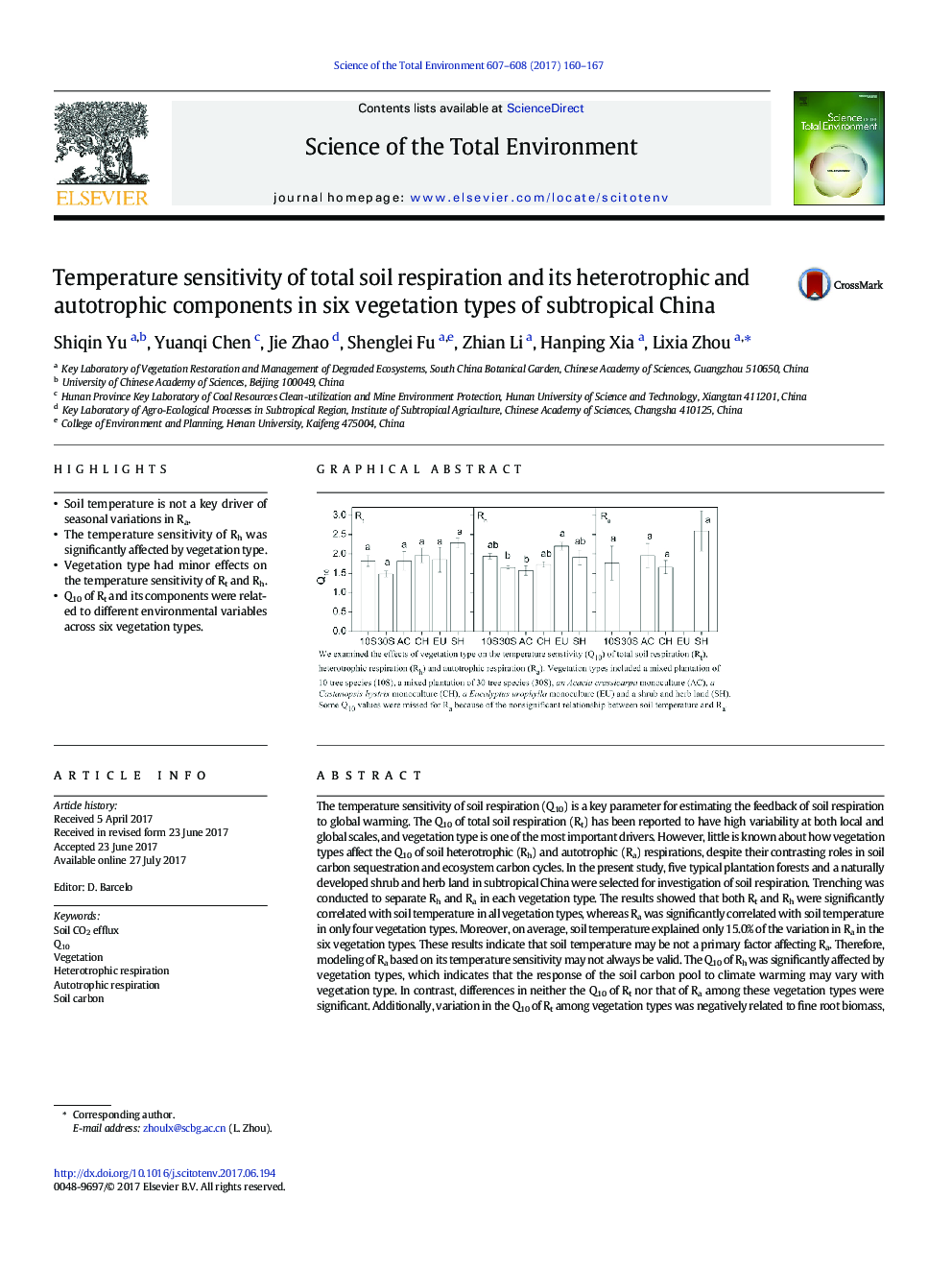| کد مقاله | کد نشریه | سال انتشار | مقاله انگلیسی | نسخه تمام متن |
|---|---|---|---|---|
| 5749975 | 1619694 | 2017 | 8 صفحه PDF | دانلود رایگان |
- Soil temperature is not a key driver of seasonal variations in Ra.
- The temperature sensitivity of Rh was significantly affected by vegetation type.
- Vegetation type had minor effects on the temperature sensitivity of Rt and Rh.
- Q10 of Rt and its components were related to different environmental variables across six vegetation types.
The temperature sensitivity of soil respiration (Q10) is a key parameter for estimating the feedback of soil respiration to global warming. The Q10 of total soil respiration (Rt) has been reported to have high variability at both local and global scales, and vegetation type is one of the most important drivers. However, little is known about how vegetation types affect the Q10 of soil heterotrophic (Rh) and autotrophic (Ra) respirations, despite their contrasting roles in soil carbon sequestration and ecosystem carbon cycles. In the present study, five typical plantation forests and a naturally developed shrub and herb land in subtropical China were selected for investigation of soil respiration. Trenching was conducted to separate Rh and Ra in each vegetation type. The results showed that both Rt and Rh were significantly correlated with soil temperature in all vegetation types, whereas Ra was significantly correlated with soil temperature in only four vegetation types. Moreover, on average, soil temperature explained only 15.0% of the variation in Ra in the six vegetation types. These results indicate that soil temperature may be not a primary factor affecting Ra. Therefore, modeling of Ra based on its temperature sensitivity may not always be valid. The Q10 of Rh was significantly affected by vegetation types, which indicates that the response of the soil carbon pool to climate warming may vary with vegetation type. In contrast, differences in neither the Q10 of Rt nor that of Ra among these vegetation types were significant. Additionally, variation in the Q10 of Rt among vegetation types was negatively related to fine root biomass, whereas the Q10 of Rh was mostly related to total soil nitrogen. However, the Q10 of Ra was not correlated with any of the environmental variables monitored in this study. These results emphasize the importance of independently studying the temperature sensitivity of Rt and its heterotrophic and autotrophic components.
260
Journal: Science of The Total Environment - Volumes 607â608, 31 December 2017, Pages 160-167
